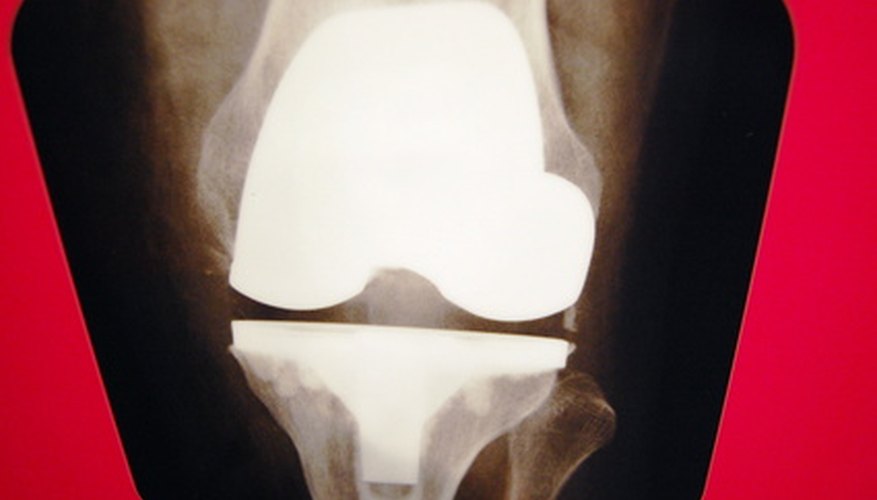While the human knee includes only three bones, the tibia, femur and patella, it is the largest and one of the most complex joints in the body. The knee joins the thigh with the leg and also consists of tendons and ligaments. Construction of the knee joint can be simple or more complex depending upon how many parts you are including. The most simple way to form the knee joint would be to include the three bones, the major ligaments and the meniscus, which is the cartilage that sits between the femur and the tibia.
- While the human knee includes only three bones, the tibia, femur and patella, it is the largest and one of the most complex joints in the body.
- The most simple way to form the knee joint would be to include the three bones, the major ligaments and the meniscus, which is the cartilage that sits between the femur and the tibia.
Purchase white modelling clay online or from your local hobby store.
Search online for pictures of the three bones that make up the knee.
Cut three pieces of foam in the shape of the three pieces of bone that make up the knee joint. Use the images you obtained to help you shape the bones.
Soften the clay and break it into three different pieces. Cover the three pieces of foam with the white clay to give it a more realistic look. Covering foam, rather then making the entire bone out of modelling clay provides for a lighter weight model.
Set the bones aside until dry.
Cover one end of the tibia and femur with découpage glue. Only cover the ends that will be touching each other in your model. Once dry, the glue will act as the cartilage between the bones, known as the meniscus. If necessary, let the first layer dry and add a second one for a more realistic cartilage.
- Soften the clay and break it into three different pieces.
- If necessary, let the first layer dry and add a second one for a more realistic cartilage.
Cut open a handful of medium thick, red rubber bands. Pin the rubber bands to the top and bottom of the patella bone you created. Alternatively, you can glue the bands to the bone if needed.
- Cut open a handful of medium thick, red rubber bands.
- Alternatively, you can glue the bands to the bone if needed.
Lay the tibia and femur down on a flat surface with the ball of the femur resting on the top of the tibia.
Connect the patella to the tibia and femur by affixing the rubber bands to each bone, so they act as the muscle. Use the image you found online to judge the position of the muscle connection.
Bend the knee joint to ensure that it is tight enough.
